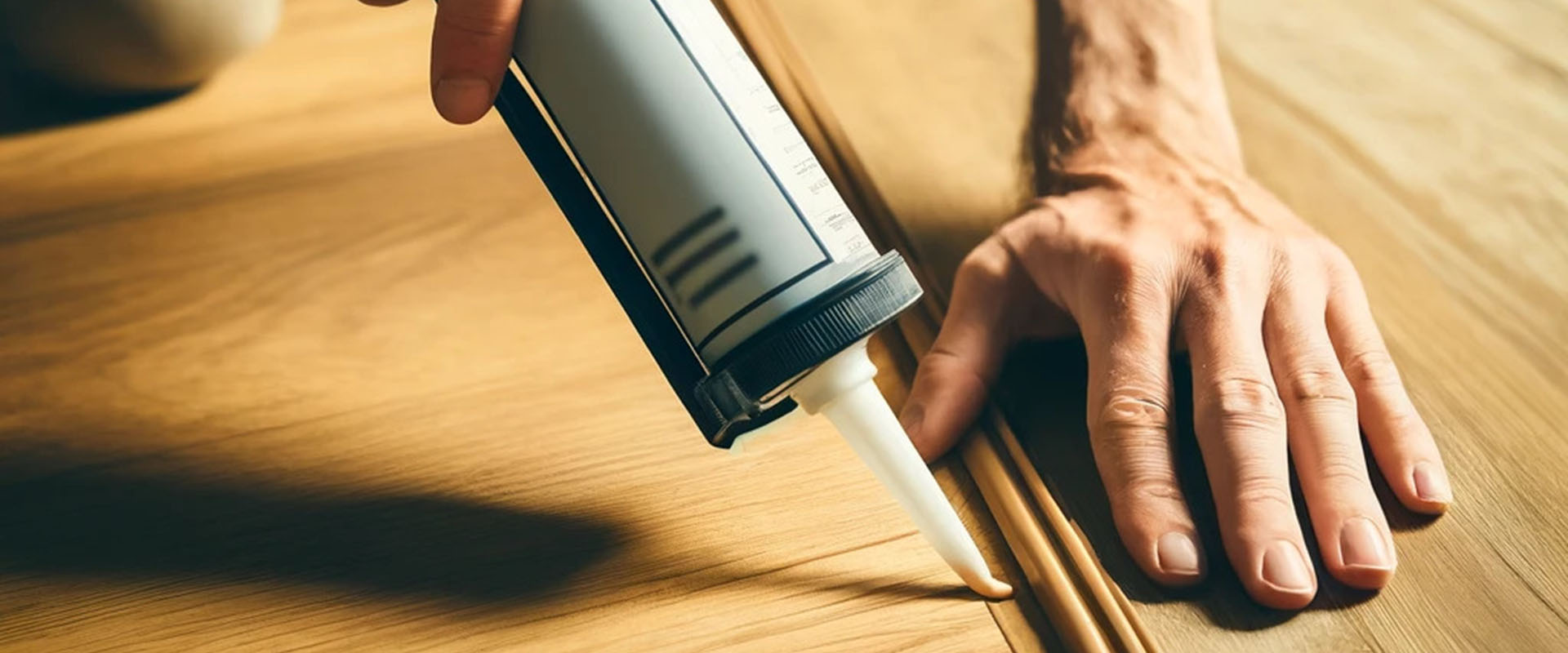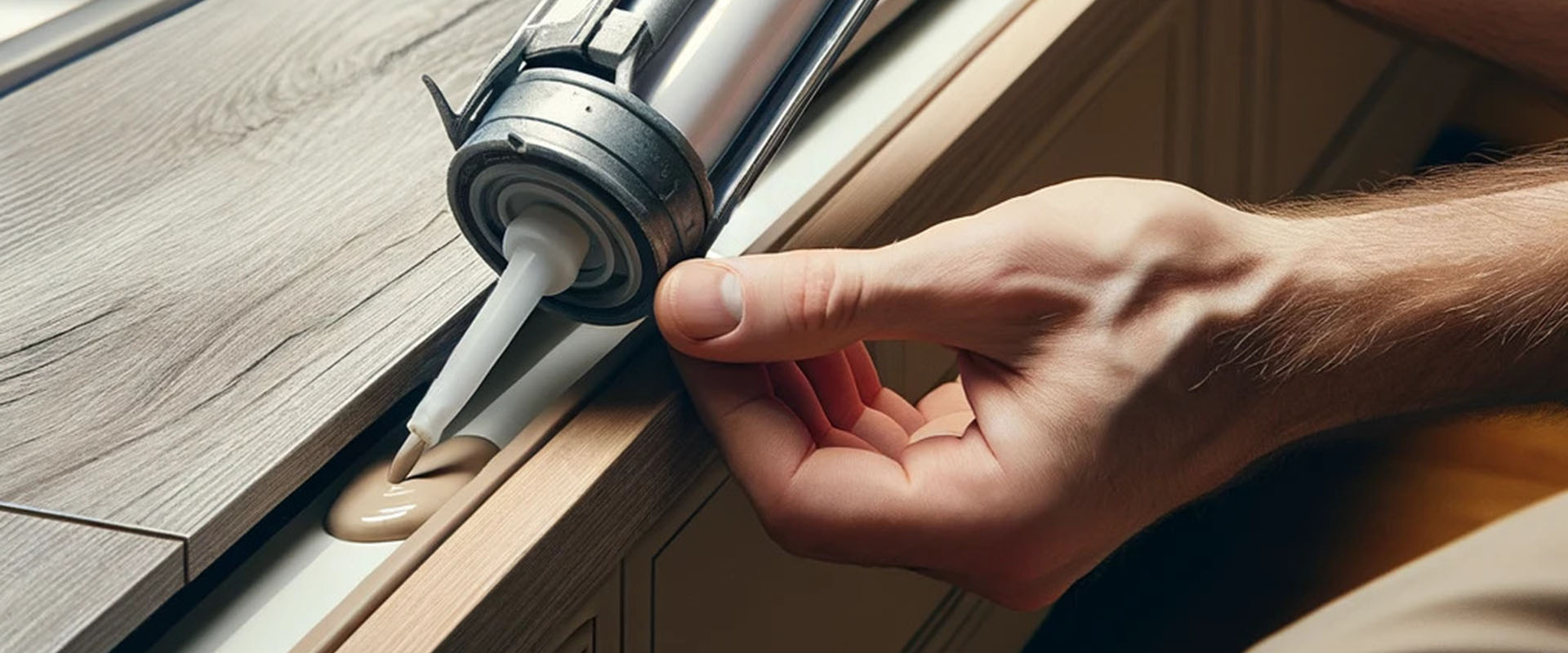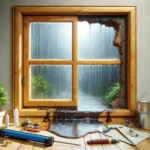Caulking is an essential part of keeping your home or business airtight. In fact, it fills the gaps between windows, doors, walls and foundations, thus preventing water, air or dust infiltration. However, to get the best results, it’s important to choose the right type of caulking for your building’s needs. In this article, we will guide you in choosing the most appropriate caulking for your home or business based on several criteria.
Understand the different types of caulking available on the market
Choosing the right caulk for your home or business can be difficult if you don’t understand the different types of caulking available on the market. There are several types of caulking, each with advantages and disadvantages depending on the specific needs of your project.
Silicone caulk is a popular choice due to its flexibility and adhesion, making it ideal for larger cracks. Acrylic caulk, on the other hand, is ideal for small and medium-sized joints. It’s also easy to clean and paint, making it convenient for home improvement projects. Polyurethane caulking is a sturdier, weather-resistant choice, making it a popular choice for outdoor projects.
There are also specific caulks for windows, doors, walls, and roofs, and some caulks are designed for specific uses, such as high-temperature or high-humidity areas.
Understanding the different types of caulking available on the market is essential to choosing the right product for your project.
The advantages and disadvantages of silicone caulking

Silicone caulks are among the most popular types of caulking on the market. They are durable, flexible, and water-resistant, making them a popular choice for both indoor and outdoor applications. However, silicone caulking can also have disadvantages. For example, they are not paintable, which can be a problem for some homeowners who want a specific color for their caulking. Additionally, they can be difficult to remove or replace once they are applied. Despite this, the benefits of silicone caulking outweigh its disadvantages for many applications.
The advantages and disadvantages of polyurethane caulking
Polyurethane caulking is another type of caulking that is commonly used to seal windows and doors. This type of caulking is typically more expensive than silicone caulking, but it also offers distinct benefits.
The advantages of polyurethane caulking are that it is very durable and weather-resistant. They are also highly grippy, which means they can be used on a variety of surfaces, including wood, metal, and concrete. Polyurethane caulks also have a long lifespan, lasting up to 10 years.
However, there are also disadvantages to consider. Polyurethane caulks have a longer drying time than silicone caulks, which means that you have to wait longer before painting or covering the surface. Additionally, polyurethane caulk can expand and contract depending on temperature, which can cause cracks and leaks if not installed properly.
Ultimately, the choice between silicone and polyurethane caulking will depend on your specific needs and the surface to be caulked. It is important to consider the advantages and disadvantages of each type of caulking before making a choice.
The advantages and disadvantages of latex caulking
Latex caulks are often used for DIY caulking projects, as they are relatively easy to apply and economical. Latex caulks are also known for their ability to be painted, which can be useful if you want to match the color of the caulk to that of your home or business.
However, latex caulking has a few significant drawbacks. First, they are not as durable as silicone or polyurethane caulking and tend to deteriorate more quickly. In addition, they are not suitable for outdoor applications because they do not withstand extreme weather conditions and UV exposure well.
On the other hand, the advantages of latex caulking include its relatively low cost and ease of application. If you’re looking for a budget-friendly option for interior caulking, latex caulking may be a viable choice.
The advantages and disadvantages of acrylic caulking
Acrylic caulks are very popular in the construction industry due to their durability and weather resistance. They are also easy to apply and clean. Acrylic caulking is often used for interior caulking work, such as baseboard joints and cracks in walls.
The advantages of acrylic caulking are its flexibility, which makes it effective in filling cracks and expansion joints. They are also UV-resistant and won’t fade, making them ideal for outdoor use. Additionally, acrylic caulking is generally less expensive than other types of caulking.
However, acrylic caulking also has disadvantages. They tend to shrink as they dry, which can leave empty spaces and reduce their effectiveness. They are also not as resistant to mold and mildew as other types of caulking and may require frequent reapplication in moisture-prone areas. Finally, acrylic caulking can degrade faster than other types of caulk, which may require more frequent repairs.
The advantages and disadvantages of butyl caulking

Butyl caulks are made of synthetic rubber and are often used for exterior applications, such as sealing windows and doors. They are highly weather-resistant and have excellent adhesion to a variety of surfaces, including glass, metal, and wood. In addition, they are very durable and can last for many years.
However, butyl caulking also has some disadvantages. They have low resistance to UV rays and can degrade faster than other types of caulking when exposed to direct sunlight. They can also be more difficult to paint due to their sticky texture, which can limit finishing options.
In summary, butyl caulks are an excellent choice for outdoor applications where weather resistance is essential. However, it is important to take into account their low UV resistance and difficulty in painting before using them.
The advantages and disadvantages of rubber caulking
Rubber caulking is another option available in the market. It is known for its durability and weather resistance, making it ideal for outdoor use. Plus, it’s easy to apply and clean. However, it can tend to dry out and crack over time, which can lead to air and water leaks. It can also be more difficult to remove and replace than other types of caulk. If you plan to use rubber caulk, be sure to choose a premium brand and maintain it regularly to extend its life.
Criteria to consider when choosing caulking
The criteria to consider when choosing caulking can vary depending on your needs and the area where you live. However, here are some general criteria to consider when choosing caulk:
- Durability: You want to make sure that the caulking you choose will last a long time, even in extreme weather conditions.
- Flexibility: caulking must be flexible enough to withstand the movements of the building materials to which it is applied, especially during temperature changes.
- Adhesion: Caulk must adhere firmly to the surface to which it is applied to ensure a good seal.
- Weather resistance: Your choice of caulking should be weather-resistant, including strong winds, heavy rain, and extreme temperatures.
- Ease of application: Some types of caulking are easier to apply than others. If you’re planning to do the work yourself, you may want to opt for a product that’s easy to use.
- Colour: If appearance is important to you, you may want to choose caulk that matches the colour of your windows or home.
- Cost: Cost is of course an important factor to consider when buying caulking. Keep in mind that the cheapest products aren’t always the best choices in the long run.
The lifespan and weather resistance of caulking
Lifespan and weather resistance are important criteria to consider when choosing caulking for your home or business. Indeed, caulking that is not weatherproof can deteriorate quickly, which can lead to air and water leaks and thus compromise the energy efficiency of your building.
In general, silicone caulks have a longer lifespan and better weather resistance than latex or acrylic caulks. Polyurethane caulks are also weatherproof and have a good lifespan.
It’s also important to choose caulk that is resistant to UV rays and temperature changes, especially if you live in an area with significant climatic variations.
Ultimately, it is important to consider lifespan and weather resistance as key criteria when choosing caulking to ensure optimal energy efficiency and protection against air and water leakage.
The costs and availability of different types of caulking
The costs and availability of different types of caulking can vary depending on many factors, such as quality, material, brand, region, and supplier. In general, silicone caulks are considered to be the most expensive, while latex caulks are the least expensive. Polyurethane and acrylic caulks are usually in between in terms of cost.
It is important to note that the initial cost of caulking does not always reflect the total long-term cost. Premium caulking may be more expensive to purchase, but it can last longer and provide better weather protection, which can save you money in the long run by reducing repair and maintenance costs.
When it comes to availability, silicone and acrylic caulking is usually easy to find at DIY stores and hardware stores. Polyurethane and butyl caulking can be a little harder to find, but it can be ordered online or purchased from specialist construction stores. Rubber and latex caulks are often the easiest to find and can be purchased at most hardware stores.
Ultimately, the choice of caulking type will depend on many factors, including the climate in your area, the desired level of waterproofing, cost, and availability. It is important to take the time to understand the different types of caulking available and to consider the relevant criteria before making a final choice.
How to Find a Qualified Professional for Your Caulking Installation
Installing caulking may seem like an easy task to do yourself, but for the best results, it is recommended that you hire a qualified professional. Here are some tips for finding the right professional for your caulking installation:
- Do your research: Start by researching caulking companies in your area. Check online reviews and comments to see what previous customers have said about their work.
- Ask for recommendations: Ask your friends, family or neighbours if they have ever worked with a trusted professional to install their caulk.
- Check for certifications: Make sure that the company you choose is certified and has sufficient experience in the field. Ask to see their license and liability insurance.
- Request a quote: Get quotes from multiple companies to compare prices and services offered. Be sure to ask for details about the materials used and turnaround times.
- Ask questions: Don’t hesitate to ask about their experience, installation techniques, materials used, and any other concerns you may have.
By following these tips, you can find a qualified caulking installation professional who will provide you with quality work and help you save money in the long run by reducing your home’s heating and cooling costs.



